Want to get your hands on a little piece of science history? If you are hankering for some Edison, Turing or Einstein memorabilia there are some fantastic items out there, you might just need some deep pockets. JustCollecting, a community for selling your own collectables, has helped us pull together some amazing collectables from some of the most important scientific minds of the 20th Century.
Thomas Edison
Thomas Edison was a prolific American inventor and businessman whose discoveries changed the modern world. Amongst his literally hundreds of inventions were many that heavily influenced the 20th Century, such as a system for electricity distribution and the first practical electric light bulb, the motion picture camera and the phonograph.
Due to Edison's prolific career, there are countless pieces of memorabilia relating to him available for collectors.
These include the first dollar bill (above) collected as payment by his Edison Electric Light in January 1883, following the installation of electric lights in parts of New York, which sold at Bonhams in 2014 for $15,000.

Further notable sales include Edison's final notebook, containing the experiments into rubber production he was conducting for Henry Ford when he died in 1931, which sold at Freeman's in 2012 for $50,000; and his Bolivian patent for the electric light bulb dating from 1881, which sold at Heritage in 2014 for $21,250.
Alan Turing
Alan Turing was a computer scientist, mathematician and cryptanalyst whose theories laid the foundations for computer science. His work at Bletchley Park during WWII deciphering German codes also helped bring an early end to the war, saving millions of lives. In 2002 Turing ranked twenty-first on the BBC nationwide poll of the 100 Greatest Britons, and was voted amongst the 100 Most Important People of the 20th century by Time Magazine.
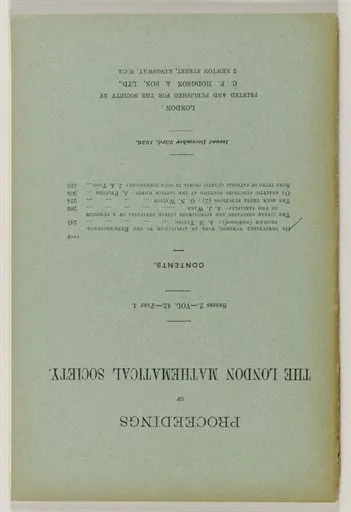
Turing's groundbreaking paper 'On Computable Numbers, with an Application to the Entscheidungsproblem' was published in 1936. It introduced the concept of a computing device that could replicate the mathematical reasoning and thought processes of the human brain, paving the way for the modern-day computers. An original first-edition copy of the paper sold at Christie's in 2008 for $182,500, and in 2013 Bonhams sold a revised copy inscribed by Turing to scientific philosopher R.B Braithwaite for $311,194.
In April 2015, Bonhams offered the only-known extensive Turning manuscript in existence at an auction in New York. Consisting of 56 hand-written pages, the notebook dated from 1942 and documented Turing's efforts whilst working at Bletchley Park to crack the Enigma Code. Offering a unique insight into the thought process of a genius, Turing's notebook sold for a world-record price of $1,025,000.
Wernher von Braun
Wernher von Braun was a German aerospace engineer regarded as one of the 'Fathers of Rocket Science'. After working for the Nazis during WWII to develop the V-2 missile, he was recruited by the US government as part of the secret Operation Paperclip in 1945.
Once across the Atlantic, von Braun worked on military missile programs before transferring to the newly-established NASA. There he served as director of the Marshall Space Flight Center, and acted as chief architect for the Saturn V launch vehicle. His passionate belief in the future possibilities of space exploration is said to have been one of the driving forces behind the 'Space Race' of the 1950s and 60s.
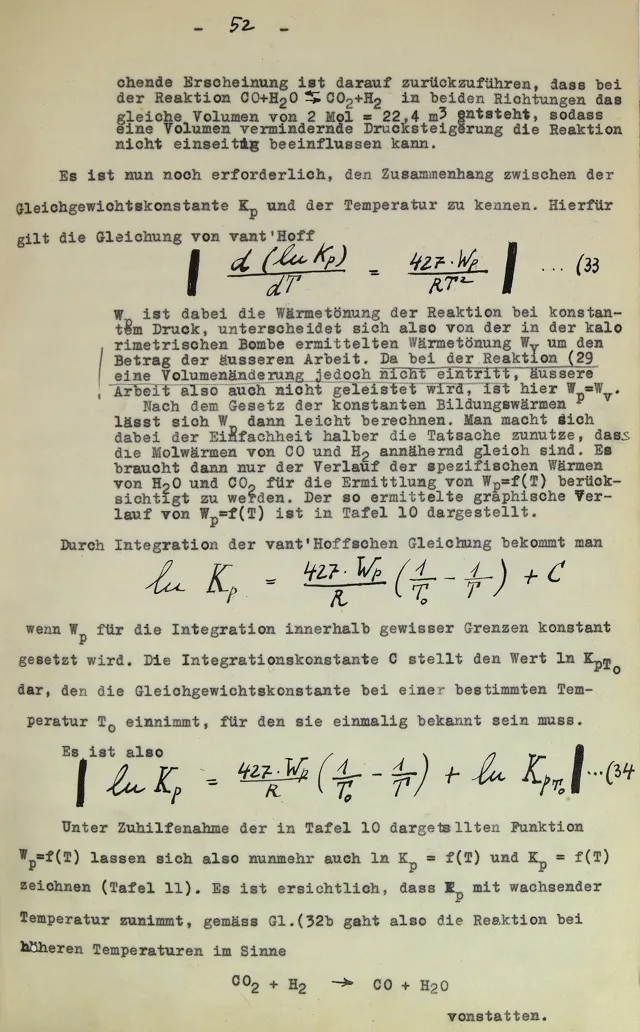
Von Braun was awarded his doctorate in Physics in July 1934, following his groundbreaking thesis 'About Combustion Tests' or 'Construction, Theoretical, & Experimental Solution to the Problem of the Liquid Propellant Rocket'. The Nazis determined his theories to be so important that the paper remained classified by the German government until 1960. In 2007, an original copy of the thesis sold at Bonhams for $33,000.
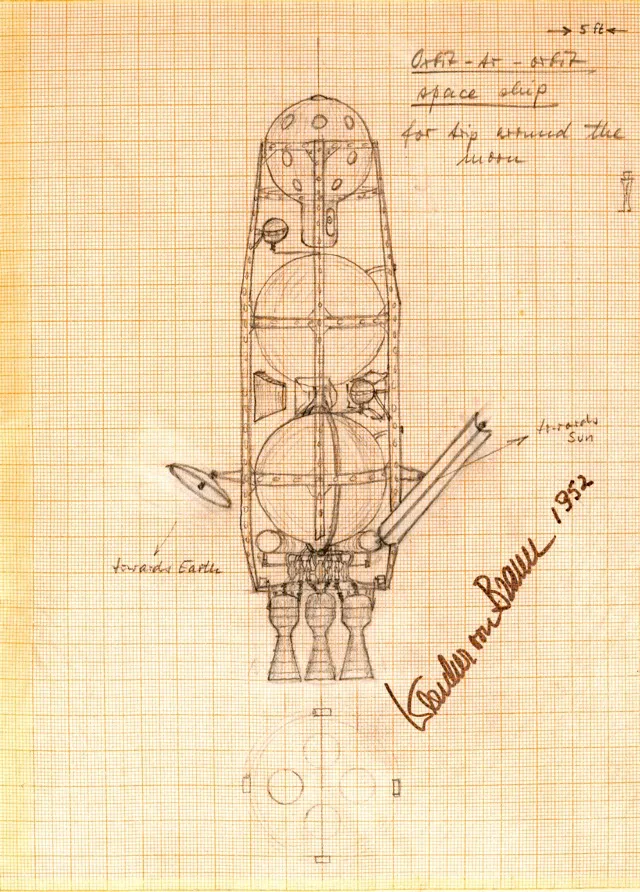
A year later, a collection of von Braun's sketches and articles dating from the 1950s also crossed the auction block. These articles were published by Collier's magazine in a series entitled 'Man Will Conquer Space Soon!', which captured the imagination of the American public and inspired a generation to dream of visiting the Moon. The sketches and articles sold at Bonhams in New York for a total of $132,000.
James Watson & Francis Crick
James Watson and Francis Crick, together with Maurice Wilkins, made perhaps the most important scientific breakthrough of the 20th Century – a model for the double helix structure of DNA.
Their work provided an invaluable insight into the function and genetic make-up of all life on Earth, and created the platform on which modern-day genetic science is built.

tems relating to this historic breakthrough have commanded some of the largest prices ever paid for scientific memorabilia. In 2013 Crick's 1962 Nobel Prize medal and diplomas sold for a record $2,270,500; and just a few weeks later, a three-page letter written to his son explaining his discovery, known as the 'Secret of Life' letter, sold at Christie's for an even more impressive $6,059,750.
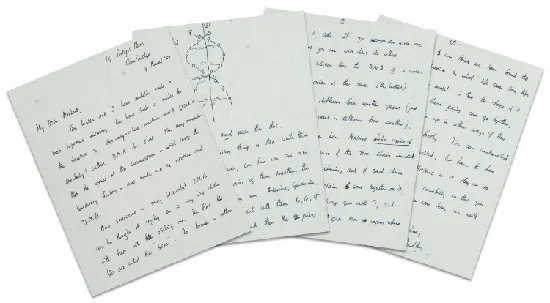
One year later, his colleague James Watson's Nobel medal was offered for sale, the first by a living recipient. It sold at Christie's for $4,757,000, purchased by Russian billionaire Alisher Usmanov, who immediately gave it back to Watson.
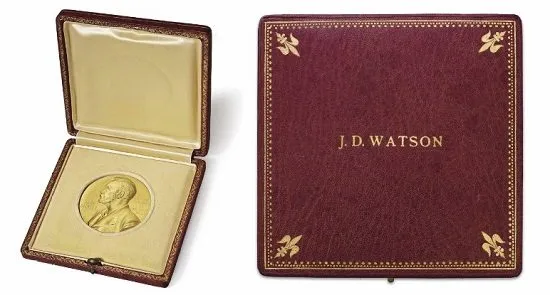
“In my opinion, a situation in which an outstanding scientist has to sell a medal recognising his achievements is unacceptable,” Usmanov said in a statement. “James Watson is one of the greatest biologists in the history of mankind and his award for the discovery of DNA structure must belong to him.”
Albert Einstein
German theoretical physicist Albert Einstein is regarded as the most influential physicist of the 20th Century. In 1905, whilst working as a patent clerk, he wrote four remarkable papers, which changed the course of scientific history.
The four papers - on the photoelectric effect, Brownian motion, special relativity, and the equivalence of matter and energy - led scientists to a greater understanding of how the Universe works, and his General Theory of Relativity remains one of the foundations of modern physics.
Einstein wrote his first-ever scientific paper at the age of 15, entitled 'On the investigation of the state of ether in a magnetic field'. Dating from 1895, it displayed the interest in physics that would later lead him to study at the Zürich Polytechnic and develop his theories. Having been originally sent to his uncle, this paper sold at auction at Christie's in 2006 for $676,992.
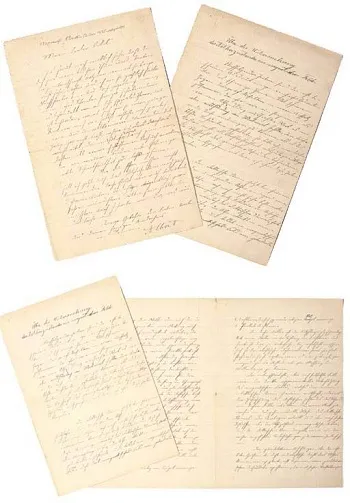
Einstein was also instrumental in the development of the atomic bomb, having implored US President Franklin D. Roosevelt to develop one before the Nazis did in 1939.
Before he died in 1955, Einstein confided in his friend Linus Pauling "I made one great mistake in my life—when I signed the letter to President Roosevelt recommending that atom bombs be made; but there was some justification—the danger that the Germans would make them."
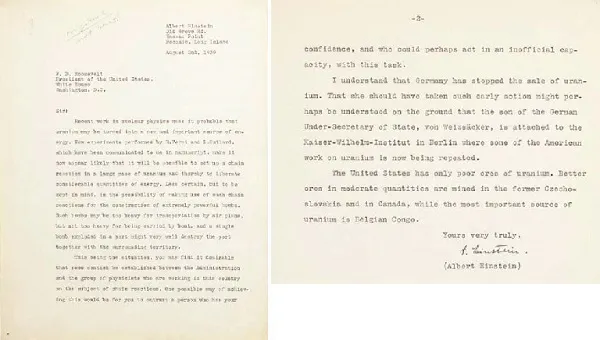
In 2002, an unsent handwritten copy of the letter sold from the estate of billionaire collector Malcom Forbes at Christie's for $2,096,000.
Follow Science Focus onTwitter,Facebook, Instagramand Flipboard